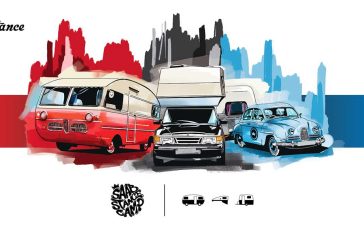At some better equipped gas stations, as well as in vulcanizing shops, in addition to air compressors, nitrogen filling of tires can be offered. Nitrogen in tires – where did such an idea come from?
Filling tires with nitrogen promises many useful things and has been used for a long time. But many claim that it is a deception and that filling tires with nitrogen cannot bring benefits that an “ordinary driver” can notice.
And the bottom line is exactly that – does the “ordinary driver” have any tangible benefits from nitrogen-filled tires. The “ordinary driver” doesn’t really benefit much from this, but nitrogen in tires for some other “drivers” is very useful.
The cost of filling tires with nitrogen is almost negligible and bearable even for the poorest car owner. It can be said that it is definitely not expensive if it really brings so many benefits. Drivers who believe that ordinary air is quite good for filling tires state that the main argument is that the air itself has the following composition: 78 percent nitrogen and 21 percent oxygen. Air also has small amounts of other gases, too, such as carbon dioxide, neon, and hydrogen
Filling tires with Nitrogen – insignificant or very useful?
So, if ordinary air already contains almost 80% nitrogen, what difference can that 20% make?
The essence of answering this question is that for an ordinary car, with ordinary tires and for an ordinary driver, filling the tires with nitrogen makes almost no difference compared to filling the tires with air.
However, with racing cars and airplanes, filling the tires with nitrogen definitely makes sense.
Many professional tests have shown that there are definitely differences, that is, there are clear and concrete evidences that there are advantages of filling tires with nitrogen instead of air, BUT these differences are so small that they practically do not make any difference in everyday life to the average driver.
So filling the tires with nitrogen makes sense for racing cars, ie if you often export your Saab car to the race track or Track days!
Why is that so?
Among other things, in the case of airplanes and racing cars, pressure changes and the speed of tire pressure changes should be reduced as much as possible.
As the tire heats up, the air pressure in it increases. With tires filled with nitrogen, these changes are drastically smaller (not only because of the nitrogen, but also because of the “ejection” of water vapor).
This item is extremely important in racing cars, i.e. when you take your Saab to the race track – you absolutely do not want the tire pressure to change during extremely sharp driving, where you constantly drive on the verge of losing traction, because even small differences can affect the behavior of the car.
When it comes to airplanes, for example, take-off can be from an airport at an extremely low temperature, and the final destination can be a tropical country… There are also other reasons, such as safety. Nitrogen is also used in tires on various special vehicles and heavy transport vehicles.
Of course, we have to emphasize – it’s not just about nitrogen and its characteristics. On the contrary, moisture – that is, the presence of water vapor in the rubber is a much more important factor than the concentration of nitrogen in the rubber.
The whole story with the presence of water and pressure changes due to temperature changes is not quite so simple, so we will not go into details. Basically, even ordinary air from which water vapor is extracted can help to maintain a relatively stable pressure in the tire, regardless of the temperature.
Also watch this video: the British “Fifth Gear” conducted a very interesting test:











